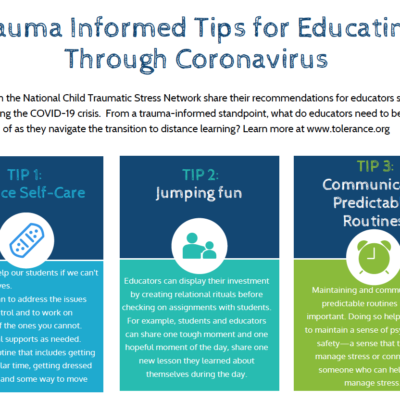By Robin Berlinsky for NAESP, an ACSA Affiliate
According to a survey conducted by the National Summer Learning Association, students lose two months of math skills during the summer months. Low-income students also lose two or more months of skills in reading achievement. Reportedly, 9 in 10 teachers spend at least three weeks reteaching lessons at the start of the school year. What can principals and teachers do now to plan for the prevention of summer learning loss and hit the ground running on the first day of school?
Here are some tips from Engaging Creative Minds (ECM)—a nonprofit organization that recently won an Excellence in Summer Learning award for its Summer STEAM Institute.
1. Failing to plan is planning to fail
Before our first summer camp, we reached out to Terry K. Peterson, senior adviser for after-school and summer learning at the College of Charleston, education consultant at the C.S. Mott Foundation, and editor of a compendium of after-school and summer learning research titled “Expanding Minds and Opportunities” that offers advice on how to design our summer camp. While he could have shared hours and hours of research and data on all the successful programs he has seen over the years, Peterson broke things down into three key factors that make or break a successful summer camp: 1) attendance, 2) relationships, and 3) engagement. These have been at the core of every decision we at ECM have made since our summer programs launched.
Ask yourself: Whom do I know? Is there a local education leader who can offer advice as we begin planning our world-class summer program?
2. Steal from the rich
There are so many summer programs rich in experiences around the country, and most would be honored to share their experiences and assist you as you develop your own summer program. For example, the 2016 New York Life Excellence in Summer Learning Award winners from the National Summer Learning Association:
- Engaging Creative Minds, Charleston, South Carolina
- The Clarence T.C. Ching PUEO Program, Honolulu, Hawaii
- The Wayne State University Math Corps, Detroit, Michigan
- Summer Enrichment Experience, New Britain, Connecticut
- Dallas City of Learning, Dallas, Texas
Ask yourself: Where are the programs rich in expertise, and what can I learn from them?
3. It takes a village
Chris Smith, executive director of Boston After School & Beyond (BASB)—a nonprofit that connects school, after-school, and summer learning strategies—says that partnerships are critical to addressing student needs and meeting their interests. BASB met Mayor Martin J. Walsh’s goal of reaching 10,000 students through 100 summer programs a year early.
BASB works with 127 summer programs to pursue common goals, implement shared measures, and have a greater citywide impact on closing opportunity and achievement gaps than programs would if they worked in isolation. “By working collaboratively in a data-driven way, programs can understand and play to their strengths,” says Smith, “and learn where they can improve.”
Ask yourself: Who are the community partners in our area, and is there a way to share resources for greater impact?
4. Make sure your program can pass the “muffin test”
The first year of camp, the counselors would send campers down to me when they were “bad,” so I could “fix” the problem. I would welcome the students, offer them a seat and a muffin, and then we would talk.
I learned a lot during these informal conversations and developed strong relationships with the campers. I was quite proud of the results and thought everything was going great until I was told all the counselors felt it was disrespectful for me to sit and eat muffins with the children as a reward instead of punishing them. I spent the weekend agonizing over this because I had let my team down, but how could I not be a champion for the children? There had to be a balance.
The answer finally came to me. Monday morning before the campers arrived, I met with the team. I started with an apology for the fact that they felt they were not supported. And then I explained that our camp was doing a great disservice to our campers if it was more fun to eat muffins with me than it was to be engaged in the exciting programs we had developed. I challenged them to ask themselves if they were truly providing an environment that was engaging and safe, while forging new relationships. They left that meeting with a greater understanding of our expectations. The students became more engaged, and the counselors had more fun.
Ask yourself: What is your positive behavior management plan, and is everyone on board?
5. Follow the leader
Who will you choose to lead your camp? Choose someone with passion and energy who can rally the troops every day—especially when they’re exhausted and dragging. An “out-of-the-box thinker” who understands your mission will take your program to great heights. “I made sure everyone felt valued,” says Kari Maastricht, camp director of Summer STEAM Institute at St. Paul Elementary in Clarendon School District One (CSDO). “Knowing that I supported the counselors’ efforts and understood any frustrations they had helped us achieve results and overcome challenges together.” Camp enrollment more than doubled in six weeks.
Ask yourself: Who is the best person to lead the team? Keep in mind that it doesn’t have to be a current staff member.
6. Think college football …
“We’ve got spirit, yes we do!” When your campers arrive, they should feel as excited and energized as the football team coming out of the tunnel before the big game. While many of us cannot afford cheerleaders and marching bands, we can certainly provide fun music, bubbles, cheering, and lots of energy! Give your staff time to think about how they can create a similar feeling at the beginning and ending of each day.
Ask yourself: What can we do every morning and afternoon to create an adrenaline rush?
7. … And fast-food cheeseburgers
Another topic is consistency. If we tell parents that we provide arts-integrated, highly engaging personalized learning through STEAM experiences, then we’d better deliver. I show the counselors a television commercial for a popular fast-food chain. We look at the thickness of the juicy burger, the melted drippy cheese, and the crisp green lettuce. I bring an actual cheeseburger from that same fast-food chain, and we talk about the similarities and differences. Very rarely does the real version match the quality of the television version.
Ask yourself: Will our actual program meet or exceed the promises we made during the promotion of our summer camp?
8. If you build it, they will come
But will they keep coming back? At a conference for the Association of Children’s Museums, I remember one presenter saying, “They should be crying on the way out, not on the way in.” Think about the goals of your summer program. How can you meet those goals while creating a unique summer experience that makes kids want to come back?
Learning can be fun and engaging, and the best programs are the ones where the students have so much fun they don’t even know they are learning! For example, our local baseball team and their mascot visit our camp to open car doors and have lunch with our campers. We play loud, fun music in the hall and give students plenty of opportunities to explore their interests.
Our first year of camp, the Charleston County School District reported that 63 percent of students who attended the full six weeks of our summer camp had no summer learning loss as reported on their spring and fall Measure of Academic Progress (MAP) scores, and every year since we have had a waiting list of campers.
Ask yourself: What unique experiences do we provide that keep students coming back for more?
9. Embrace creativity and innovation
Summer is the time to get out from behind the desks and break out the dance shoes, art smocks, clay, and fabric. We focus on arts integration at ECM and are so lucky to have Board Chair Scott Shanklin-Peterson. Peterson is the former senior deputy chair of the National Endowment for the Arts and currently a senior fellow in the College of Charleston Arts Management Program, so she knows the power of the arts.
“You can walk into a school and see the art on the wall … or not on the wall … and know if it’s a good school. The arts really make a difference,” she says. Creativity and innovation are key 21st century skills. They can and should be developed by all students and be at the heart of all you do, no matter what your mission is.
Ask yourself: What is our main focus, and how can we ensure that it reflects 21st century skills?
10. Location, location, location
Choosing to have a summer program at your school is convenient for you, but is it the best choice for your students? Wayne State University’s Math Corps (WSU) in Detroit knows how to do it. This academic enrichment and mentoring camp brings middle and high school students together, with college students and mathematicians sharing in the teaching and learning of mathematics in a university setting. The camp is based on the idea of creating a self-perpetuating “corps” in which students go through the program and return as mentors and tutors, passing their knowledge and values on to younger students, who in turn do the same. What a great way to affect many more students just by choosing your location wisely.
Ask yourself: Where is the coolest possible place to have our summer program? And if you are in a school or community center, make it feel and look different for better summer engagement, attendance, and relationships.
Robin Berlinsky is the executive director of Engaging Creative Minds (ECM) in Charleston, South Carolina.








Leave a Comment